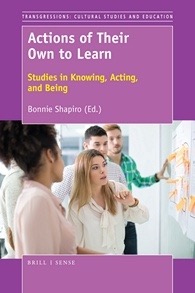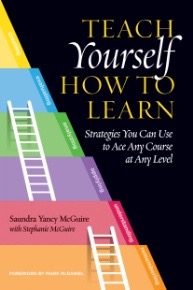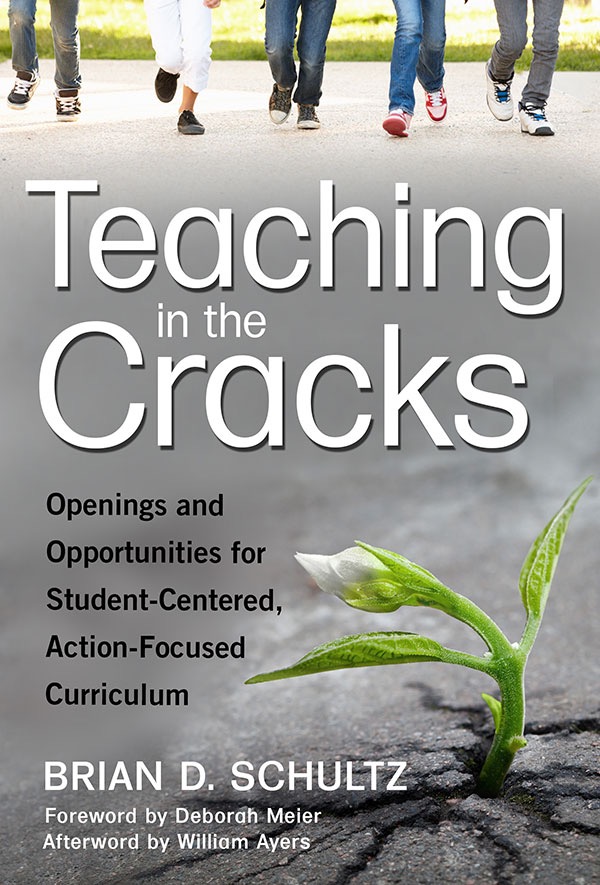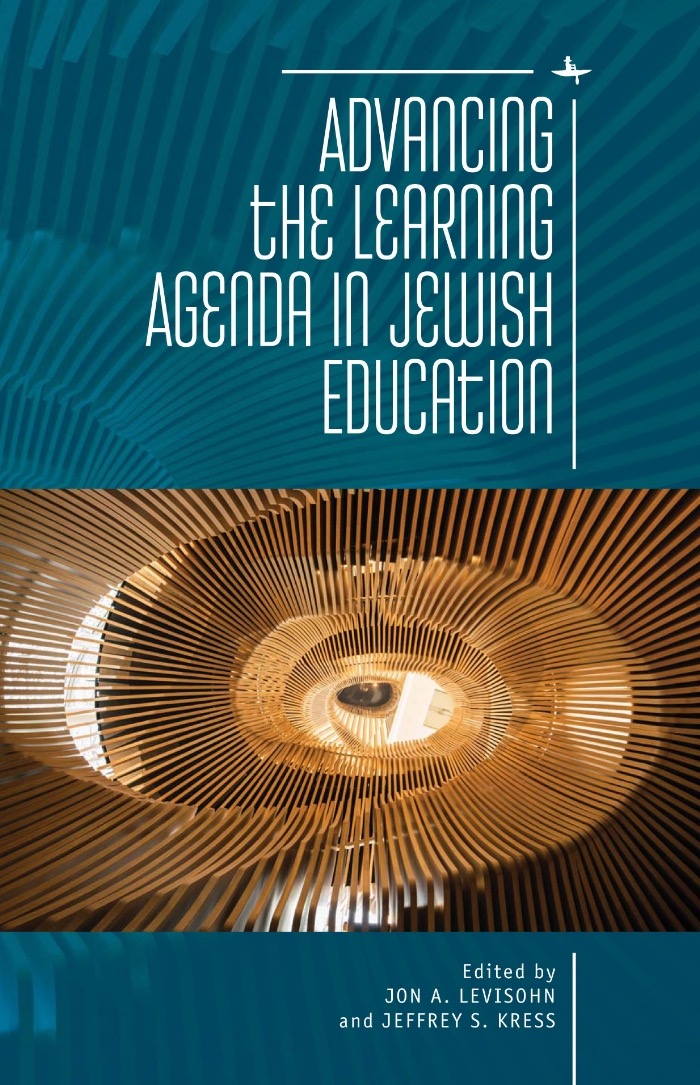student learning
Select an item by clicking its checkbox

Actions of Their Own to Learn: Studies in Knowing, Acting, and Being
Date Reviewed: October 1, 2018
Actions of Their Own to Learn: Studies in Knowing, Acting, and Being is an edited volume of fourteen essays which explore the question of what it means to take actions of one’s own to learn. Taking action to learn happens within both formal and informal settings; it also happens during the process of building new knowledge as learners pose questions about the world and design new ways to collect and analyze information to answer those questions (4).The researchers argue that “a conception of what it means to learn must be framed as part of a larger process of building understanding that involves more than the mind” (4). In this constructivist worldview, learning “is a process in which learners are actively involved in the mental construction of ideas using prior knowledge and experiences as a foundation” (6). Building understanding (can) include participants working simultaneously as researchers, teachers, and learners (5).
The book is divided into three sections: (1) the power and agency of the learner, (2) active learning with others to build knowledge and community, and (3) the environments that support active learning.
In section one, through the use of a mutual learning process, researchers themselves take action to learn and understand the emerging values of the communities they study. For example, White uses autoethnography (and a carbon footprint calculator) to document changes needed to reduce her carbon footprint. She then uses her learning to design a curriculum to help her students take action to reduce their own carbon footprints. As a Provincial Parks educator, Den Hoed challenged “top-down, political, disciplined” educational processes by using Mezirow’s basic theory of transformative learning to “teach for change.” In so doing, he helps his students transform sets of fixed assumptions and expectations to be more “inclusive, discriminating, open, reflective, and emotionally able to change” (63, quoting Cranton [Understanding and Promoting Transformative Learning, 2006]).
In section two, scholars who construct knowledge-building communities among disparate groups of learners (grade-school children, physics teachers, math students) have discovered that improvisational co-action, in which ideas “become taken up, built upon, developed, reworked, and elaborated upon by others,” enables shared understandings and learnings that are collectively determined: the class as a whole becomes “the body that learns” (138-140). Towers and Martin discover that improvisational learning, listening authentically to children’s ideas, and building trust helps both teachers and students evolve to see themselves as collaborators rather than competitors (12-13).
Finally, section three describes environments that support active learning, including classrooms where students are in control of decisions about how scientific inquiries will proceed, and another, where people come together and create film and photographs (photovoice) to educate, build awareness, and encourage political action. These processes help students develop a deeper connection with course content (208).
This book presents a variety of qualitative approaches (narrative, interviews, autoethnography, case study) to activist learning in multiple and variegated learning environments. The scholarship affirms teaching that is firmly student-centered, where teacherly authority is decentered, and power between students and teacher is shared throughout the life of the learning cycle.

Teach Yourself How to Learn: Strategies You Can Use to Ace Any Course at Any Level
Date Reviewed: October 1, 2018
The word “magic” appears several times in this book for students on how to succeed in college and university courses. Co-authored by Saundra McGuire, director emerita of the nationally acclaimed Center for Academic Success at Louisiana State University, and her daughter Stephanie McGuire, the volume is laced with stories of seemingly “magical” immediate and dramatic improvement in student performance after the application of the learning strategies described here in ten short chapters.
The metacognitive learning strategies described draw on Bloom’s taxonomy and the neuroscience of learning, such as the work of Mark McDaniel (Make It Stick, 2014). They include strategies on reading textbooks, taking notes in class, reviewing, doing homework assignments, time management, and studying for and writing tests and exams. A handy little learning strategies inventory in Appendix C allows students to “predict” their grades based on the strategies they use.
More important than these specific learning strategies for this reviewer are the sections of the book devoted to fostering in students a growth mindset that challenges the deterministic view that intelligence is innate (“I’m just not good at math”), and encourages students instead to believe that they can succeed and motivates them emotionally to do the effective work necessary for success. Monitoring self-talk and attributing results to one’s actions rather than external factors are powerful mental tools for improvement.
In order to succeed, however, students need more than just a belief that they can do it and a set of effective strategies; they also need to know as specifically as possible what is expected of them. This is where this book addresses not just students but also instructors. Instructors put obstacles in the way of student success by not clearly articulating their expectations (and by creating unsupportive and discouraging classroom experiences and course structures). The book includes a very helpful section in chapter seven on how students should read a course syllabus. Notably, if a syllabus does not seem to clearly lay out expectations, students are encouraged to meet with the instructor for clarification. In fact, one of the strategies is to make regular use of instructor office hours.
The book promises that if students use these strategies they can “ace” any course. Will students be disappointed? While the results may be magical, the method is not – hard work using effective strategies is required. Even reading the book may be a stretch for some students, although it is short and largely written in a very accessible style. It will also likely profit students in sciences and technology, where memorization is important, more than those in the humanities, such as religion and theology majors. The book does very little to address strategies for successful research and writing of papers, for instance, and the anecdotes of student success are drawn overwhelmingly from the sciences.
However, much can be gained from this book by both students and instructors in all fields. My biggest take-away is the author’s insistence, “Now hear this: All students are capable of excelling” (65). This book shows how.
When you teach online, you get accustomed to classroom teachers telling you they can’t imagine not being in the same place at the same time as their students. Usually what they dwell on is not being in the same place. They profess difficulty imagining being geographically distant from their ...
Date Reviewed: June 16, 2021

Teaching in the Cracks
Date Reviewed: September 6, 2018
Brian D. Schultz New York, NY: Teachers College Press, 2017 (xiv + 128 pages, ISBN 9780807758311, $29.95) Teaching in the Cracks by Brian D. Schultz, a professor of education at Northeastern Illinois University in Chicago, explores ways to make current K-12 classrooms more student-empowering, justice-oriented, and action-based. It is not that already available curricula are not student-empowering, have no concern for justice, or ...
Teaching in the Cracks: Openings and Opportunities for Student-Centered, Action-Focused Curriculum
Brian D. Schultz
New York, NY: Teachers College Press, 2017 (xiv + 128 pages, ISBN 9780807758311, $29.95)
Teaching in the Cracks by Brian D. Schultz, a professor of education at Northeastern Illinois University in Chicago, explores ways to make current K-12 classrooms more student-empowering, justice-oriented, and action-based. It is not that already available curricula are not student-empowering, have no concern for justice, or seldom inspire creative student actions; What most concerns the author are school systems that dictate almost everything that students experience, think, and do. In such a system, says Schultz, learning is largely top-down, authoritarian, controlled by agendas that perpetuate the status quo, and “bombarded by standards, assessments, [and] evaluations” (86). Shultz’s critiques and enthusiasm focus on reforming this “troubling” system and more specifically on transforming current everyday curricula in classrooms (86). His proposal, however, stays at the level of reforming or transforming, rather than completely negating or overhauling our current educational practices. That is why he calls his suggestive methodology and transformative tactics “teaching in the cracks.” He encourages educators to find creative loopholes in the present system where they can make education more democratic, collaborative, and thus bottom-up.
Schultz acknowledges that his proposal sounds great on paper but is hard to implement in the classroom, and so throughout he offers numerous practical examples of proposed curricula and how they are working around the nation. Examples vary, covering everything from a single classroom, the entire school’s curriculum, forming close partnerships with surrounding communities, and specific topics, to teacher preparation (all covered in chapters two to six). Together they make this book an invaluable reference for field educators. In particular, chapter six, “Becoming the Teacher I Want to Be: Finding Support to Teach in the Cracks,” and chapter seven: “Turning the Corner: Techniques, Resources, and Tools for Taking-Action,” should be helpful for those who would like to implement the proposed learner-centered class education in a seemingly impotent school context. In chapter six, Schultz gives two fine examples of veteran teachers who introduced several effective strategies that are applicable to other contexts as well. To be sure, contexts differ. Yet, as long as a similar school structure is involved (for example, executive administrators, a sizable student body and its own governing entity, supportive community groups, and an aspiring teacher), these strategies would be beneficial anywhere. Websites introduced in chapter seven are extremely useful resources too.
This book is not per se a theoretical book on student-centered, action-focused curriculum. Rather, it is full of vivid examples of actual current practices. Some readers may find this book insufficiently radical to make a dramatic change in the existing school system, but that is not the author’s purpose. Its particular strength lies in its unabashed focus on the classroom itself. The author believes that the real change can and must happen in each individual classroom where the teacher and students meet for daily education, before any large-scale systematic change is possible. In this respect, this book provides a small, yet reliable, hope for most field educators who, like me, aspire to create a more learner-led class environment.

